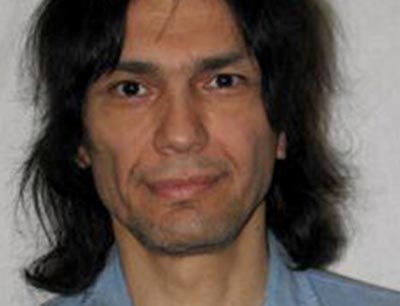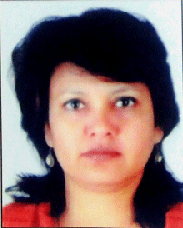
"I am beyond good and evil. I will be avenged. Lucifer dwells in us all."
"That's it."
Richard Ramirez was 29 when he spoke those words in a Southern California courtroom in 1989. He'd just been sentenced to death following his conviction for 13 murders, five attempted murders, 11 sexual assaults and 14 burglaries.
A serial murderer, a serial rapist, a Satan worshiper, a man who inflicted physical and emotional pain on his victims in myriad ways. Richard Ramirez was all those things, but to Californians terrorized during his violent spree in the spring and summer of 1985, he was simply the "Night Stalker."
The vengeance that Ramirez promised apparently never came to fruition. Neither did the state's plan to execute him.
Instead, on Friday morning, Richard Ramirez died of natural causes at Marin General Hospital north of San Francisco, according to the California Department of Corrections and Rehabilitation. Ramirez became the 59th inmate in the state to die in this manner while awaiting execution, not including 22 who committed suicide and six dead of other causes. He was 53.
Guns, knives, fists and fearSo how did the "Night Stalker" come to be?
Ramirez was born to a large family in El Paso, Texas. He was in his late teens when he landed in Southern California in the 1970s.
Media reports indicated that he had a history of drug use, some arrests on relatively minor charges, and no evident purpose in life over his first few decades.
But some time in the mid-1980s, things turned drastically.
It was then that horrific tales began to surface of a man breaking into homes, mostly in Southern California, in the wee hours of the morning.
On several occasions, a man who happened to be inside was killed quickly. A female might be raped, sometimes more than once. Then the man who'd become known as the "Night Stalker" would ransack the home looking for valuables.
There were gory exceptions to this scenario. Like 30-year-old student Tsai-Lian Yu, found lying bloody on the ground near her running car in Monterey Park, California, according to media reports. There was also the 41-year-old woman bound and raped, as her 12-year-old son was handcuffed and locked in a closet.
While some victims were in their 60s and older, others were in their 20s and 30s. There were reports of pentagrams being scrawled at crime scenes, as well as snippets from heavy metal songs.
The killing weapons varied: guns, knives, fists. All were used with evident malice, and all contributed to the fear and frenzy that gripped the region.
Some victims survived -- in some cases without the assailant's apparent knowledge, in others seemingly spared for whatever reason -- and then talked to police. Yet authorities were still grasping for clues in August 1985, when a manager at a hotel in San Francisco's Tenderloin district recognized descriptions of the suspect as a man who'd stayed at his hotel periodically for a year and a half.
By then, Ramirez had already left the Bay Area for Southern California. He attacked again on August 24 in Los Angeles. After a bus trip to Tucson, Arizona -- where he'd been visiting his brother -- he was finally recognized at a store near a downtown L.A. bus station after his image had been splashed across newspapers.
Ramirez fled. Residents of an east Los Angeles neighborhood, though, spotted him trying to steal two cars, caught and subdued him, then held him down until police arrived.
'It's just pure evil'After years of delays, Ramirez's case went to trial in 1989. The whole prosecution cost Los Angeles County more than $1.8 million, a record amount that stood until O.J. Simpson's murder trial years later.
As horrific and dramatic as the allegations against him, Ramirez's antics during the proceedings added to the intrigue -- like when he'd draw a pentagram on his hand and yell out, "Hail Satan."
The jury convicted him of 11 murders in Southern California and two others in the San Francisco area.
A death sentence followed. According to the Los Angeles Times, Superior Court Judge Michael Tynan said Ramirez, during his bloody spree, had displayed "cruelty, callousness and viciousness beyond any human understanding."
The rest of his life was spent at the home for many of California's most dangerous felons - San Quentin State Prison, which sits like a fortress along the bay just north of San Francisco.
Even on Death Row, alongside the likes of Scott Peterson and the Menendez brothers, it hasn't been an entirely lonely existence for Ramirez. One woman who sat through his trial, thinking he was innocent, then wrote him dozens of letters and visited him in prison. It was there, in 1996, that the two married.
"He's kind, he's funny, he's charming," the convicted serial killer's wife, Doreen Ramirez, told CNN one year later. "I think he's a really great person. He's my best friend; he's my buddy."
That's not the impression of millions in Los Angeles County who'd been terrified by him, and especially those who survived his attacks or are related to those killed.
They are people like Peter Zazzara, whose parents were among those slain. He couldn't stomach sitting through Ramirez's trial, and even talking to CNN years later in 2006, he couldn't make sense of what happened.
"It's just evil. It's just pure evil," said Zazzara. "I don't know why somebody would want to do something like that. To take joy in the way it happened." # Source: The CNN
 "I am beyond good and evil. I will be avenged. Lucifer dwells in us all."
"I am beyond good and evil. I will be avenged. Lucifer dwells in us all."